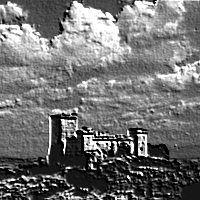Home |
The Secrets of Narnia
at London

You can see : Annalisa Basili ,Sara Uffreduzzi,Christian Armadori, e Mauro Belvedere, with the Major of Narni's Town.
(thanks to the Major of Narni's Town for the pictures)
"THE SECRETS OF NARNIA – DISCOVERING SOUTH UMBRIA – ITALY"
London National Hall-Olympia september 2006
Viva Italia Show
MADE IN ITALY exibition
Everybody knows the imaginary NARNIA, a wonderful place you can easily reach going through an old wardrobe, but maybe you still don’t know the real Narnia, a town just 100 Km away from Rome!
Clive Staples Lewis, author of "The chronicles of Narnia" and teacher of Latin culture at University, had known this thousand-year-old Italian town (Narni by its present name) during his studies, analyzing documents by the Roman author Tito Livio, Ab Urbe Conditia, x, 9-10, where he found the story of this small but brave town in southern Umbria, which resisted the Roman enemy before being conquered in 299 B.C. After the occupation Narni became a strategic outpost for Rome itself, an important military position until the Middle Ages. The Romans built the magnificent Augustus’ Bridge (27 B.C.), one of the best known masterpieces of classical architecture, an essential destination along the streets covered by travellers of the Grand Tour. The Bridge was described by important authors, like Goethe, Addison, Gregorovius and Byron; it was also depicted on a famous painting by the French artist Corot (today it is exhibited in the Luovre museum, in Paris).
Narni(a) soon became a stronghold in the Nera valley, a floodplain where the Roman consul Curio Dentato wanted the course of the river to be diverted, in order to drain the land, creating the world famous Marmore waterfalls (271 B.C.), Europe’s highest falls. The plain of Interamna (later called Terni) is also the birthplace of St. Valentine, Patron of the town and of every lover in the world (176 A.D.)
This land, rich in history and nature, certainly influenced C.S. Lewis while he was writing his tales; a lot of similarities between his description and the real Narnia are actually to be found in his works, among them we can mention: the sacrificial stone, the gryphon, a waterfall, and – last but not least – the whole medieval setting of the Chronicles.
The most evident proof of this relationship between Narni(a) and the "Chronicles" is an old map of Italy owned by Lewis himself, where he underlined the name Narnia (this map is today owned by a fellow citizen, Mr. Giuseppe Fortunati, who came into possession of this important document thanks to the collaboration of Mr. Walter Hooper, one of Lewis’ most important biographers).
After the world success of the movie produced by the Disney corporation, the citizens of Narni have realized how important this relationship between the town and the Chronicles can be, and now we wish that everybody in the world knew it.
more news at : http://www.vivaitaliashow.com/

a photo of Narnia's stand.



